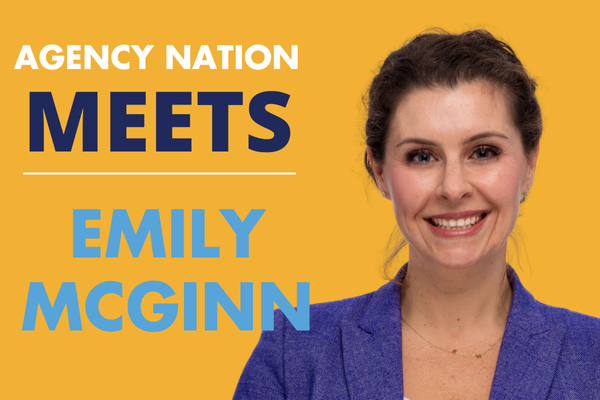‘Getting the Most Out of the Tool’ Is the Top Tech Challenge for Independent Insurance Agencies

By: Will Jones
Recently, Catalyit published “The State of Tech in Independent Insurance Agencies.” By partnering with 25 Big “I” state associations, Catalyit surveyed independent insurance agencies across the country to learn about their current tech stack, as well as what they think about the effectiveness and appropriateness of each tool.
The report surveyed agency staff from a spectrum of businesses that varied in terms of the number of employees—from 1 to 100—and total revenue—from less than $500,000 to more than $5 million. It covered both the amount of usage and satisfaction of tools that independent insurance agencies use every day. Nearly 500 agencies participated in the survey.
“Technology is no longer just a backroom activity that keeps computers running,” the report said. “Tech is a profit center. What software agencies use, what tools, integrations, processes, and data agencies harness are all critical in driving profit. With the right tech, your agency will thrive.”
While the possibilities are virtually endless for agencies to supercharge their business with the right technology and, more specifically, the right combination of technology, agents are facing a number of challenges.
As an agency grows, the average number of technology platforms they use increases. Agencies with less than $500,000 in revenue use an average of 6.2 platforms, which rises to 8.9 for agencies that generate $1 million to $2 million, and 11.7 for and more than $5 million in revenue, according to the report.
However, scaling provides unique technological challenges. Between “finding the right tool,” “implementing the tool,” and “getting most of the tool,” the latter was far and away the biggest challenge, according to the report. For agencies with less than $500,000 in revenue, half of the 167 respondents in that category said it was the biggest challenge.
But as an agency’s revenue increases, so do challenges for getting the most out of the tool, rising from 62% of agencies that generate $500,000 to $1 million, up to 76% of agencies that generate between $3 million and $5 million. Meanwhile, “finding the right tool” was a challenge that is most heavily experienced in the lower revenue categories.
“There is a challenge in finding the tool, but a lot of agencies have already chosen the tools that they’re using and maybe they’ve chosen multiple tools that overlap,” explains Steve Anderson, CEO and co-founder of Catalyit. “There’s more of a focus now on not just what tech is out there, but making sure they’re maximizing what they already have—that’s what we call maximizing their tech stack.”
Meanwhile, an agency management system (AMS) is vital for managing daily agency operations. From tracking client interactions and policy administration to tracking marketing and sales activity, an AMS offers a unified platform that impacts all aspects of an agency.
Applied Epic is the most popular system, according to the report, which illustrates Applied and Vertafore’s dominance in this area of the market. It does also note that HawkSoft is a cost-effective option for smaller agencies.
Further, compared to the results of last year’s report, HawkSoft saw significant growth among agencies with revenue under $500,000 and Applied Epic experienced a 22% increase among those with $3 million to $5 million in revenue.
The report explores nearly every aspect of independent insurance agency tech. From accounting and agency compliance to chatbots, password managers and website development. Also, as new technology tools such as generative artificial intelligence continue to develop, many of the tech solutions mentioned in this report are expected to experience significant improvements in the coming years.
The report showed that more agencies are using marketing automation platforms—with a 15% increase year-over-year—for email and text marketing, prospecting, client retention, pre-renewal processes, cross-selling, and up-selling.
“There are more and more stories coming out about agencies having success with marketing,” Anderson says. “[Technology] helps their client have a consistent experience and these tools allow their staff to be able to be more efficient, providing that consistent quality experience.”
“A big problem with agencies over the years is they just don’t follow up on all the work they’re doing. It’s what I call ‘follow-up failure,'” Anderson continues. “But they shouldn’t have to remember to, and that’s what computers and automation can help with. We’re just seeing more agencies adopt and realize how these tools can help them provide a consistent quality service experience to their clients.”
For decades, agents have experienced challenges when integrating technology into existing systems and ensuring they work harmoniously with their carrier partners’ systems. This year, Catalyit gauged agents’ perceptions of how well these partners support them. The top 10 most positively ranked companies included eight regional carriers and two national carriers.
“Over the years, there’s been lots of conversation about agents and carriers and how they work together, and what we’re trying to do is put some actual numbers around that,” Anderson adds. “How satisfied are agents with carriers and what can agents, carriers and the vendors do to improve the ecosystem, all in service of the policyholder, the agency customer, and the carrier policyholder.”
Will Jones is IA editor-in-chief.










